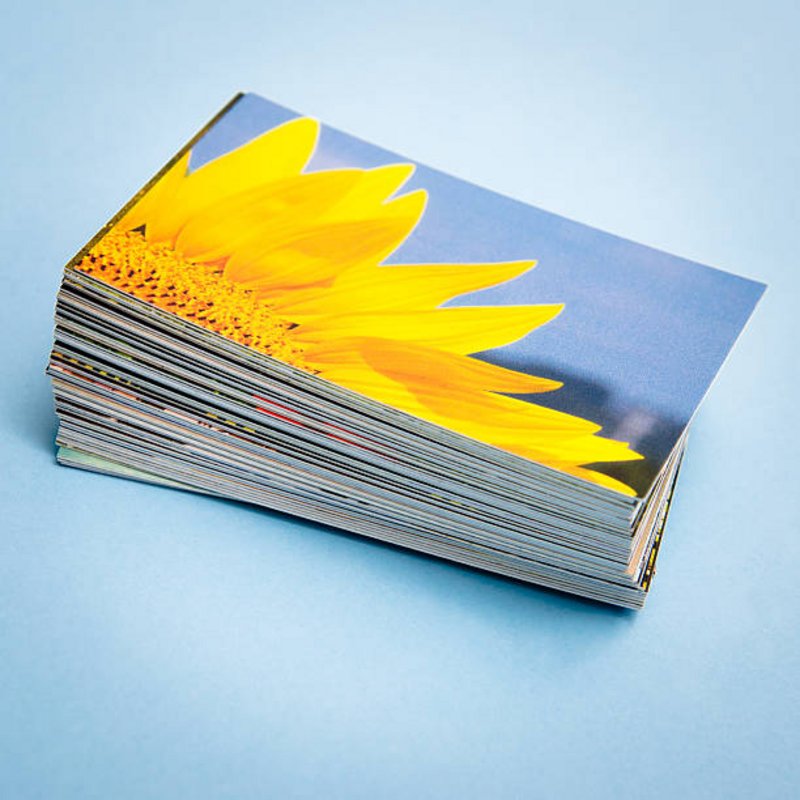July 04, 2022

With a wealth of substrate types to choose from, it's unsurprising that one
of our most frequently-asked inquiries from our customers is "which paper should
I opt for?"
Of course, when selecting the best paper, your personal preference is
paramount. It all comes down to the design and feel you desire for your print.
In this guide, we'll guide you through the essential properties to think about
and the terms to be aware of to select the best paper for printing.
Paper forms
It is essential to begin with the fundamentals. Paper Types.
JardenePhotography offers three different types of paper for fine art and
photography prints.
Alpha-Cellulose Papers
Alpha-cellulose is an excellent grade wood pulp made of trees. These are
matte papers that are refined to remove acid and lignin. It is commonly used for
fine art prints. It is typically less expensive than cotton rags and offers a
more solid feel than cotton. Alpha-cellulose is a tough and durable
paper.
Cotton Rag Papers
Cotton rag papers are usually more expensive and are extremely strong and
endurance. It can be made from cotton Linters, cotton rags or a combination of
both. They are perfect for reproductions of fine art since the texture is
similar to an original piece. Photographic prints can be enhanced with them to
add depth and character.
RC Photo Papers
RC also referred to as'resin coated papers', is a reference to photographs
that have been wet processed. Laminate was used to speed up processing in the
past. Today, RC can be extended to include inkjet photo papers. In this case
alpha cellulose-based papers are enclosed in polyethene-based plastics, and are
usually coated with microporous inkjet Receptive Emulsion. They allow for a
shiny, satin, lustre or pearl-like surface. They are quite resistant to
scratches. A metallic coated paper is available. It is made of the
multi-laminate structure that makes it possible to print durable images. The
metallic coat offers a 3D-like finish and accurate flesh tones.
Weight
Paper weight is measured in gsm which means 'grams for each square meter'.
You don't need to worry about the paper's weight. All our photo and fine art
papers are suitable for professional printing.
In general, however, artists favor heavy paper because it is more durable and
has a more substantial feeling. A heavier gsm is also ideal if you're making a
large Sunrise at
Lake Louise print to display as it is easier to hang.
A guide to the gsm levels:
60-100gsm is typical for household print paper. This is the way you'd be
feeling if you utilize an A4-sized piece of paper.
110-140gsm is the weight typical of traditional posters. It is strong enough
to stand up to wear and tear but thin enough to be suitable for fine prints of
art. Take a look at flyers and posters.
A stronger and more durable paper weighs between 170-200gsm. It is the
minimum weight we'd recommend using to print fine art.
A weight of 210-300gsm is typically the one for a more premium Fine art
paper. It feels more like card, but has a slight bend.
A thicker card-like material is between 300 and 400 grams. It is what you'd
use for wedding invitations and greeting cards. Our fine art and photo papers
are 315gsm which is the most gsm. This is for premium heavyweight paper with
original artwork.
Texture
Substrate texture, again, is really down to your personal
preferences.
It is however worth considering how you print sunrise at lake Louise and that
is displayed. Generally, smooth textured substrates will look better when
displayed under glass than heavily textured papers. A smooth paper can also
provide excellent contrast and detail.
Prints that have more texture feel better when touched and can improve the
image's depth and authenticity. Certain textures work well with certain artwork
reproductions. For example , our Cold Press Watercolour photo print paper has a look and
feel similar to the etching paper.
Final
It's possible to sound like a broken record -selecting the right finishing
for your paper is a choice that is entirely yours and a question of aesthetic
style. There are a few points you should keep in mind when choosing the finish
of your paper.
Here are the options available to you...
Matte
All of our fine art papers come with a matte finish. Matte finish papers
offer an unnatural and smooth surface, without the shine that is associated with
glossy paper. Even matte papers described as smooth may appear slightly grainy
in comparison to gloss papers.
A matte finish is a great way to emphasize different tones and colours and
give a more authentic appearance for art reproductions. It is often favoured
when photographing black and white.
If the sunrise at lake Louise print will hang in glass, matte is the best
alternative since it's not glare. It can make images appear grainy or duller and
may cause colours to not be as vivid.
Glossy
Glossy papers typically have an elongated, reflective surface made by a resin
coating. Glossy finishes can be utilized to improve contrast, detail and vivid
colour in your photos. It is possible to see every single detail in pin-sharp
clarity due to the shiny, smooth surface.
The glossy look is commonly used for posters and consumer photos. You should be aware that glossy paper can create glare when viewed from certain angles. It also has less resistance to fingerprints than matte papers that could cause problems when your image is handled.
Posted by: Technology Positive at
11:39 AM
| No Comments
| Add Comment
Post contains 923 words, total size 7 kb.
35 queries taking 0.029 seconds, 73 records returned.
Powered by Minx 1.1.6c-pink.









